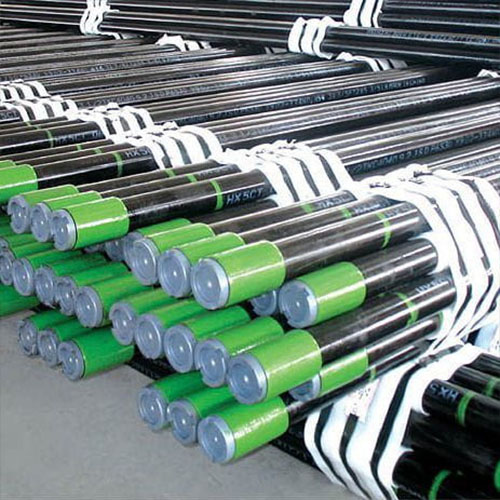Table of Contents
Benefits of Using API 6A Casing Header in Oil and Gas Industry
The oil and gas industry relies heavily on equipment and technology to ensure the efficient and safe extraction of resources. One crucial piece of equipment used in this industry is the API 6A casing header. This article will explore the benefits of using API 6A casing headers in the oil and gas industry.
API 6A casing headers are essential components in wellhead systems, providing a means of connecting multiple casing strings to the wellhead. These headers are designed to withstand high pressures and temperatures, making them ideal for use in the challenging environments encountered in oil and gas production.

One of the primary benefits of using API 6A casing headers is their ability to streamline the casing installation process. By providing a central point for connecting multiple casing strings, these headers simplify the overall well construction process, reducing the time and labor required for installation. This can result in significant cost savings for oil and gas companies, as well as faster well completion times.
In addition to their efficiency, API 6A casing headers also offer enhanced Safety and reliability. These headers are designed and manufactured to meet strict industry standards, ensuring that they can withstand the demanding conditions encountered in oil and gas production. This reliability is crucial for preventing equipment failures and minimizing the risk of accidents or environmental damage.
Furthermore, API 6A casing headers are designed to provide flexibility in well design and operation. These headers can accommodate a wide range of casing sizes and configurations, allowing for greater adaptability in well construction and production. This flexibility is essential for addressing the diverse needs of different well sites and reservoirs, providing oil and gas companies with greater versatility in their operations.
Another key benefit of using API 6A casing headers is their compatibility with other wellhead equipment and components. These headers are designed to integrate seamlessly with other API 6A-compliant equipment, such as Valves, chokes, and Connectors. This compatibility ensures that the entire wellhead system functions cohesively, minimizing the risk of compatibility issues and simplifying maintenance and repairs.
In conclusion, API 6A casing headers offer numerous benefits for the oil and gas industry. From streamlining the casing installation process to enhancing safety and reliability, these headers play a crucial role in well construction and production. Their flexibility and compatibility with other wellhead equipment further contribute to their value in the industry. As the demand for oil and gas continues to grow, the use of API 6A casing headers will remain essential for ensuring efficient and safe production operations.
How to Properly Maintain and Inspect API 6A Casing Header for Maximum Efficiency
API 6A casing headers are an essential component in the oil and gas industry, used to control the flow of fluids in wellheads and production systems. Proper maintenance and inspection of these headers are crucial to ensure maximum efficiency and safety in operations. In this article, we will discuss the importance of maintaining and inspecting API 6A casing headers, as well as the steps involved in doing so.
Regular maintenance and inspection of API 6A casing headers are necessary to prevent equipment failure, minimize downtime, and ensure the safety of personnel and the Environment. These headers are subjected to high pressures, corrosive fluids, and extreme temperatures, making them susceptible to wear and tear over time. By conducting routine maintenance and inspections, potential issues can be identified and addressed before they escalate into major problems.
One of the key aspects of maintaining API 6A casing headers is to follow the manufacturer’s recommended maintenance schedule. This typically includes regular cleaning, lubrication, and replacement of worn or damaged parts. Additionally, it is important to inspect the headers for signs of corrosion, erosion, and mechanical damage. Any abnormalities should be promptly addressed to prevent further deterioration of the equipment.
In order to properly inspect API 6A casing headers, it is essential to have a thorough understanding of the equipment and its components. This includes knowledge of the various types of valves, Seals, and connections used in the headers. Inspections should be carried out by qualified personnel who are trained to identify potential issues and make informed decisions regarding the maintenance and repair of the equipment.
During inspections, it is important to pay close attention to the condition of the valves and seals in the casing headers. These components are critical for controlling the flow of fluids and preventing leaks. Any signs of wear, damage, or leakage should be addressed immediately to prevent potential safety hazards and environmental contamination.
In addition to visual inspections, non-destructive testing methods such as ultrasonic testing and magnetic particle inspection can be used to detect hidden defects in the headers. These testing methods can provide valuable insights into the integrity of the equipment and help identify potential areas of concern that may not be visible to the naked eye.
Proper documentation of maintenance and inspection activities is also essential for ensuring the integrity of API 6A casing headers. This includes keeping detailed records of maintenance schedules, inspection findings, and any repairs or replacements that have been carried out. This information can be used to track the performance of the equipment over time and make informed decisions regarding future maintenance and replacement needs.
In conclusion, maintaining and inspecting API 6A casing headers is crucial for ensuring the efficiency and safety of oil and gas operations. By following the manufacturer’s recommended maintenance schedule, conducting thorough inspections, and keeping detailed records of maintenance activities, potential issues can be identified and addressed in a timely manner. This proactive approach to maintenance and inspection can help prevent equipment failure, minimize downtime, and ensure the continued reliability of API 6A casing headers in the field.
